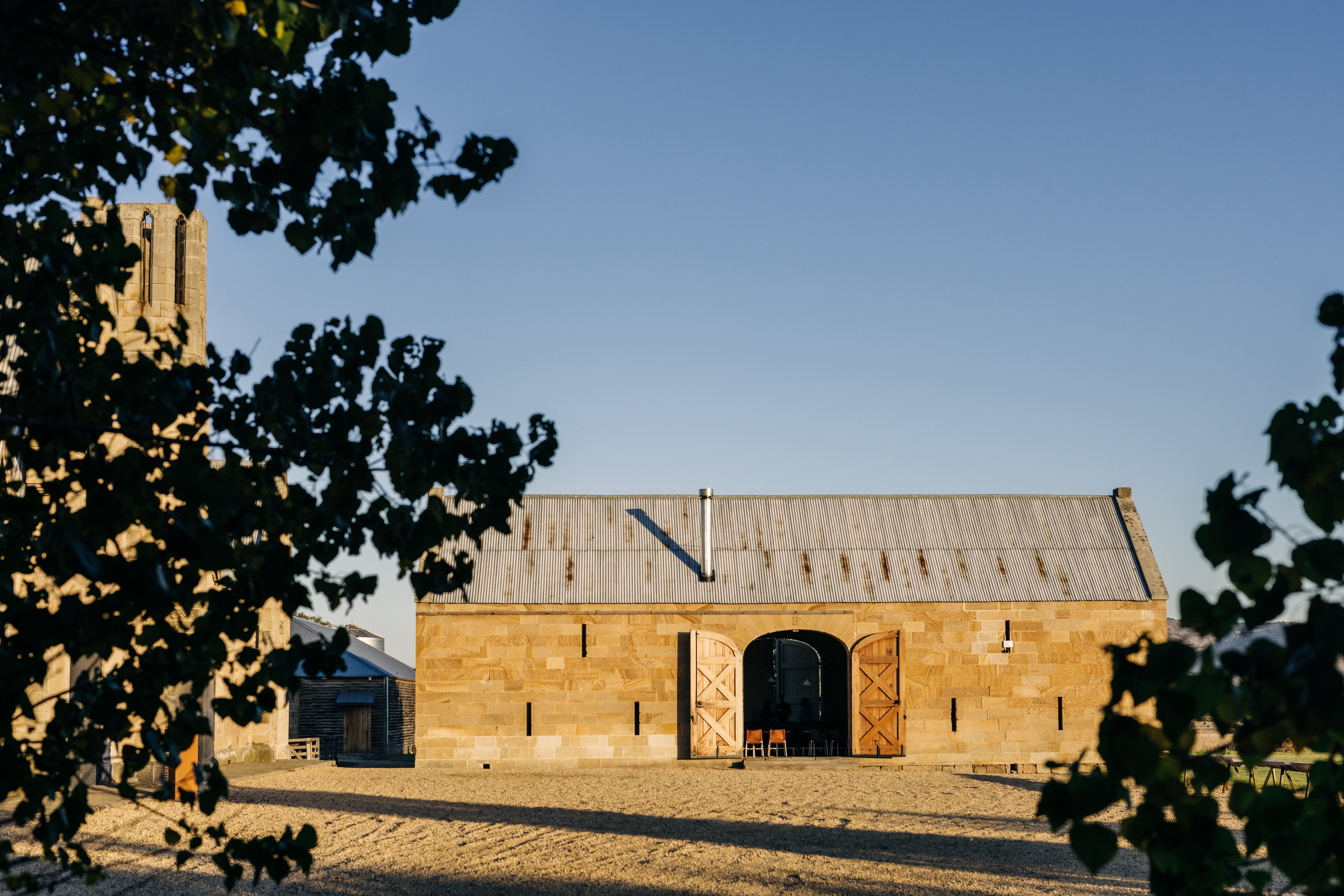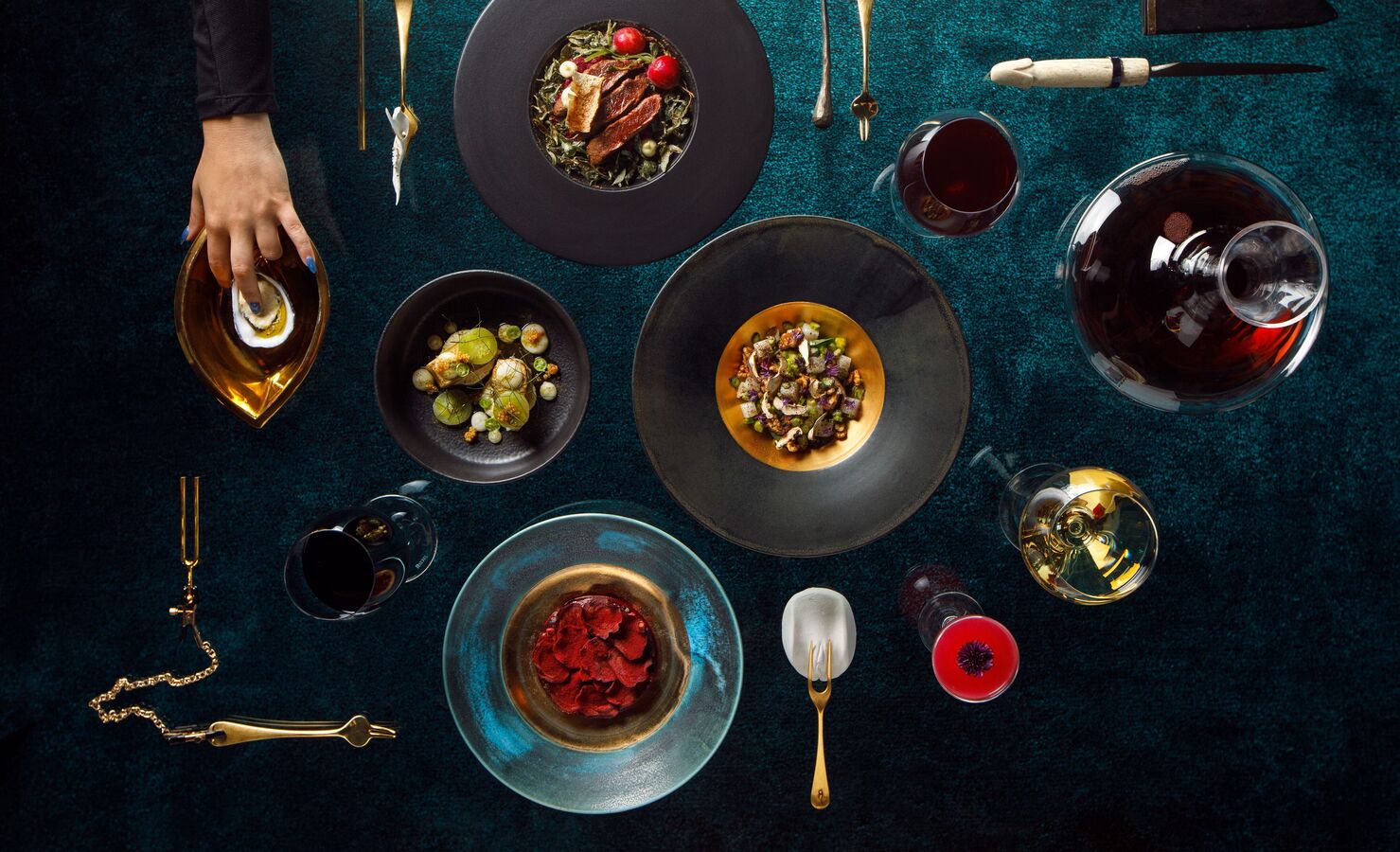Tasmania is fast emerging as a hot new food destination for a number of reasons. Over the past couple of years, soaring rents in mainland Australia have prompted chefs and creative food folk to flock to Hobart, Tasmania’s capital, to launch their ventures. This symbiotic blend of talent and Tasmania’s naturally bountiful fresh produce, owing to its unique geographical history,has led to this little island of rugged mountains, ancient forests, and dramatic coastlines becoming a truly unique food mecca.

View Full Image
The Agrarian Kitchen
Over lunch, at The Agrarian Kitchen, where the talents of “25 employees and billions of microbes” come together, we enjoy much of the farm and fermentary’s bounty—green corn tostada, white asparagus, celeriac miso—chef Dunn explains how the island’s unique location has helped the survival of heirloom varieties and lesser-known artisan techniques that has given rise to a food culture that’s respectful of the land. Here, a burgeoning food movement is producing award-winning whiskies, best-in-class wines, and artisanal cheese and chocolate, apart from offering a range of restaurants to explore.
Later that day, I learn about Tasmania’s “whisky super climate” from Bill Lark, the founder of Lark Distillery, the first whisky distillery in Tasmania. “The island’s cool, humid climate slows the maturation of whisky, allowing for a richer flavour profile with a floral note thanks to Tasmania’s cold climate barley. Lark is the only distillery with a consistent supply of Tasmanian peat—among the many drams we sample, the Earth series, a collection of single cask releases inspired by Tasmania’s unique ecosystems, stands out.The Moss Hopper, which celebrates the distillery’s Central Highland peat marsh, features notes of Tasmanian floral peat, ripe cherries, honeysuckle, and chocolate, while The King Billy Pine, a tribute to the endemic froglet, is characterised by honeyed sweetness, highland peat, and notes of sea salt. The whiskies come paired with an unusual but delightfully crunchy accompaniment: bakes from the homegrown Pigeon Whole Bakers. A unique whisky pairing, it’s just one of the many examples of how the local food community is proud of their thriving food culture.

View Full Image
Lark distillery
I pick up on the same deep local pride at Frank, an Argentinian steakhouse with a Tassie twist that I dine at later. Run by Hobart hospitality veteran Scott McMurray, high-quality Tasmanian produce is a strong focus here. On the menu, I spot local gems: Wagyu from Robbins Island Wagyu Beef, oysters from Tasmanian Oyster Co, and mushrooms from Mr Brown & Towns. While the fare is wildly different in style from The Agrarian Kitchen, it reflects a similar food philosophy of letting the ingredients shine. I’m grateful for this diktat as I dig into fire-roasted oysters, whipped cod roe tostadas and an addictive cola-glazed pork belly.
The next day, I walk off my many calories at the subversive MONA, the Museum of Old and New Art. Having marvelled at everything from The Great Wall of Vagina, 151 porcelain vulvas sculpted from real women and the infamous “poo machine”, Wim Delvoye’s Cloaca Professional, a machine which turns food into excrement, I make my way to Faro Bar + Restaurant, a gorgeous sun-drenched restaurant in the museum that is arguably more a culinary exhibit at the museum than an eatery. Faro’s ‘platedropping’ menu features dishes like ‘Carcass In Swamp,’ featuring cured and smoked wallaby, warrigal puree and salt-baked beetroot; and ‘Eat The Problem,’ which involves wild Tasmanian fallow deer, candy carrots, plus blackberry and coffee vino cotto. Years ago, the restaurant transitioned to taking farmed animals off the menus, as an extension of the artist Kirsha Kaechele’s 2019 book Eat the Problem, which is dedicated to finding sustainable solutions for food while also protecting local native species. The sprawling museum estate also houses Moorilla Estate, one ofTasmania’s oldest vineyards.

View Full Image
At Maria.
Of all the wine regions in Australia, the Tasmanian wine region is one of the cooler climate regions, which means that it produces distinctly different and unique wines from the rest of the country. The climate and soils of the region combine to create ideal growing conditions for developing naturally elegant, intensely flavoured and aromatic wines, with Chardonnay and Pinot Noir the region’s most renowned varieties. Of the many vineyards in the region, Pooley stands out.
When Denis and Margaret Pooley planted seven rows of pinot noir and ten rows of riesling in the Coal River Valley as a retirement plan in 1985, they could not anticipate the impact their little farm would have on Tasmanian wine. In 2023, Pooley Wines was awarded Winery of the Year by James Halliday’s Wine Companion. Taking in a view of the sprawling vineyards, enjoy varieties like crisp Riesling and Syrah, that you can pair with wood-fired pizzas and locally-made cheeses from Bruny Island Cheese Co. Should you wish to explore the local cheese scene, a short ferry ride over to the tiny island off Tasmania’s southeastern coast, you can taste Alpine-style or bloomy-rind cheeses at Bruny, which you can enjoy with the label’s craft beers, of which the saison is highly recommended.
If wine is your jam, Hobart is home to a host of vibey wine bars like Institute Polaire, which combines cold-climate wines, lavish snacks, and the freshest local seafood in an elegant dining room. At Sonny, where the vibe is laidback and communal, the friendly staff recommends and pours wine while handing out plates of asparagus fusilli, prosciutto toast, and kingfish crudo. Lucinda Wine Bar is another great option if you’re looking for something that feels more upscale, with globe chandeliers and checkered tile floors. Pick from an extensive Tasmanian wine list as well as the many unique ones from across the globe.

View Full Image
Oysters at Maria
For our final meal, I headed over to Maria for a Mediterranean-inspired menu that brings together local and Australian-sourced produce, and traditional Mediterranean flavours and cooking techniques. Across plates of fresh oysters with wild fennel pollen migonette and charred octopus with burnt lemon and mountain pepper, chef and co-owner Christian Ryan summed up what makes Tassie’s food culture so special. “The biggest difference about Tassie’s food scene is that everything is locally owned. We’re driven by passion here. Freshness is our superpower.”
Smitha Menon is a food journalist and the host of the Big Food Energy podcast. She posts @smitha.men on Instagram
